Chloromycetin is a broad-spectrum antibiotic used to treat various bacterial infections. It belongs to the class of drugs known as chloramphenicols, which inhibit bacterial protein synthesis by binding to the 50S bacterial ribosome. Chloramphenicol was first discovered in 1947 and has since become an essential antibiotic in the medical field.
Chloromycetin is available in multiple forms, including oral capsules, eye drops, and ointment. The oral form is often used to treat systemic infections, while the ophthalmic form is primarily used for eye infections.
Chloramphenicol is effective against a wide range of bacteria, including both Gram-positive and Gram-negative organisms. It is commonly used to treat respiratory tract infections, urinary tract infections, meningitis, and other serious bacterial infections. However, due to the emergence of antibiotic resistance, its use is now more restricted and reserved for cases where other antibiotics have failed.
Contraindications
Chloromycetin should not be used in patients with a known hypersensitivity or allergy to chloramphenicol or any of its components. It is contraindicated in individuals with a history of bone marrow suppression or blood dyscrasias caused by the drug. Additionally, chloramphenicol is not recommended for use in infants younger than two months of age, as they may be at an increased risk of developing gray syndrome, a potentially life-threatening condition characterized by abdominal distension, vomiting, and cyanosis.
Possible Side Effects
Chloromycetin may cause several side effects, although not everyone experiences them. Common side effects include mild gastrointestinal disturbances such as nausea, vomiting, diarrhea, and abdominal pain. These symptoms usually subside once the medication is discontinued.
Rare but serious side effects of chloramphenicol include bone marrow suppression, which can lead to a decrease in red blood cells, white blood cells, and platelets. This can result in anemia, increased risk of infections, and bleeding disorders. Contact your healthcare provider immediately if you experience symptoms such as unusual bleeding or bruising, persistent sore throat, or signs of infection.
Allergic reactions to chloromycetin are rare but can occur. Seek medical attention if you develop symptoms such as skin rash, itching, swelling, dizziness, or difficulty breathing.
Usage Instructions
Chloromycetin should be taken exactly as prescribed by your healthcare provider. Follow the instructions on the prescription label and do not exceed the recommended dosage. The duration of treatment will vary depending on the nature and severity of the infection.
If you miss a dose, take it as soon as you remember. However, if it is close to the time for your next scheduled dose, skip the missed dose and continue with your regular dosing schedule. Do not take a double dose to make up for the missed one.
An overdose of chloramphenicol can be dangerous and may cause symptoms such as confusion, vision problems, pale skin, and easy bruising or bleeding. If you suspect an overdose, seek immediate medical attention or contact a poison control center.
Interactions Guide
Chloromycetin can interact with other medications, potentially affecting their effectiveness or increasing the risk of side effects. It is crucial to inform your healthcare provider about all the medications you are taking, including prescription drugs, over-the-counter medicines, vitamins, and herbal supplements.
Some medicines that may interact with chloramphenicol include:
| Drug | Interaction |
|---|---|
| Warfarin | Increased risk of bleeding |
| Rifampin | Decreased effectiveness of chloramphenicol |
| Phenytoin | Decreased effectiveness of phenytoin |
| Oral contraceptives | Decreased effectiveness of oral contraceptives |
These are not the only potential interactions, and your healthcare provider will be able to provide more comprehensive information about possible drug interactions with chloramphenicol.
Common Questions
-
Can I drink alcohol while taking chloromycetin?
It is generally advisable to avoid alcohol consumption while taking chloramphenicol. Alcohol may increase the risk of certain side effects and may also interfere with the effectiveness of the medication.
-
Can I use chloromycetin eye drops if I wear contact lenses?
It is not recommended to use chloromycetin eye drops while wearing contact lenses. Contact lenses should be removed before instilling the eye drops and can be reinserted after 15 minutes.
-
How long does it take for chloromycetin to start working?
The onset of action of chloramphenicol varies depending on the type and severity of the infection. Improvement in symptoms is usually observed within a few days of starting treatment. However, it is important to complete the full course of medication as prescribed by your healthcare provider.
-
Can I take chloromycetin if I am pregnant or breastfeeding?
Chloromycetin should only be used during pregnancy or breastfeeding if the potential benefits outweigh the risks. It is important to discuss the potential risks with your healthcare provider before using this medication.
-
Can chloromycetin be used to treat viral infections?
No, chloramphenicol is only effective against bacterial infections. It will not be effective in treating viral infections such as the common cold or flu.
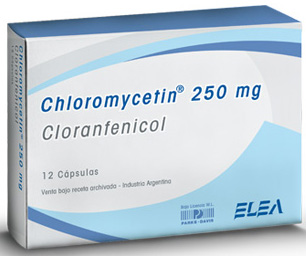
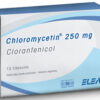
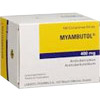
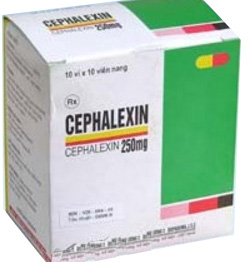
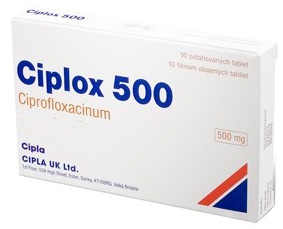

Reviews
There are no reviews yet.